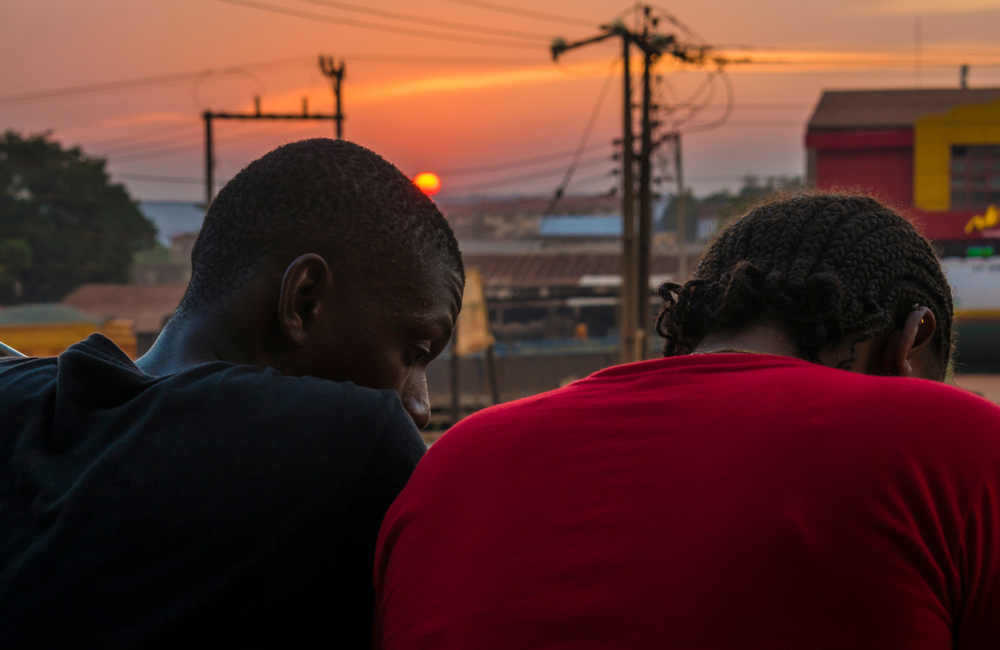
Gay and bisexual men living in sub-Saharan countries where homosexuality is legal were twice as likely to have ever tested for HIV compared to those where homosexuality is illegal. Targeted HIV policies for this key population were associated with a more than two-fold increase in HIV testing, compared to countries with no such policies.
Background
Twenty-six sub-Saharan African countries currently have laws that criminalise homosexuality, ranging from fines to the death penalty. HIV prevalence among gay and bisexual men in this region is five times higher than for the general population. However, in many instances, this key population is not prioritised in national HIV strategic plans and targeted HIV policies are lacking.
The adoption of the World Health Organisation’s (WHO) guidelines on HIV prevention and management among key populations, such gay and bisexual men, has been slow in the region. Furthermore, very few African countries are on track to achieve the first UNAIDS 95 goal by 2030: that 95% of all people living with HIV know their HIV status.
Countries that criminalise same-sex relationships were previously found to have poorer HIV outcomes, both in terms of knowledge of HIV status and viral suppression among those living with HIV.
The study
Using data from an anonymous online survey and policy information about each country, researchers considered how HIV testing among gay and bisexual men was impacted by both criminalisation of same-sex relationships and the presence or absence of targeted HIV policies for this key population in 44 sub-Saharan African countries.
Responses from men living in sub-Saharan African countries who participated in the 2019 Global LGBTI Internet Survey were included. This recruited adult self-identified LGBTQ participants through community networks and online advertisements on dating apps, WhatsApp, Facebook and other platforms. The survey was offered globally in 32 languages by UNAIDS and other partners.
At the country level, additional factors were considered. These included HIV epidemic type (concentrated among specific key populations or generalised, where HIV prevalence in the general population is higher than 1%) and funding from the US President’s Emergency Plan for AIDS Relief (PEPFAR).
A total of 3,191 adult HIV-negative gay and bisexual men participated in the anonymous online survey, providing demographic information and two self-reported HIV testing measures: whether they had ever tested for HIV, and whether they had done so within the past 6 months. The age category for just under half of the sample was 25 to 34, with most men identifying as gay (71%) or bisexual (24%). Most had either completed high school (40%) or had a university education (53%), and lived in large cities (60%).
Findings
Same-sex relationships were legal in only 19 of the 44 countries (43%). Just over a quarter of the countries had met the first 90 90 90 target, with 90% of all people living with HIV diagnosed. Most of the countries (31) had generalised HIV epidemics and just over half received PEPFAR funding.
While the national HIV policies of 32 countries included some form of targeted intervention for gay and bisexual men, none included all the WHO-recommended interventions for gay and bisexual men. For instance, while all 32 included condom provision for gay and bisexual men, only 23 provided lubricants for condom use. Nineteen countries included provisions for community-based HIV testing and counselling, while only eight provided guidance on harm reduction interventions.
Overall, 86% of the 3,191 survey participants reported ever testing for HIV, while 66% indicated recent testing. There was strong evidence of a positive association with having ever tested for HIV and the legal status of same-sex relationships, with a 6% increase in ever testing among those in countries where homosexuality was legal. The effect of targeted HIV policies was even stronger: a 14% increase in ever testing among men in countries that provided some form of targeted HIV interventions, compared to those that did not.
For testing in the six months prior to taking the survey, only legal status of homosexuality showed an association: a 3% increase in recent testing for men living in countries where homosexuality is legal.
When accounting for individual-level factors such as income and education that may impact a behaviour such as HIV testing, this pattern still held true for the influence of country-level factors on having ever tested for HIV, but not for recent testing. Thus, men living in countries where homosexuality is legal were twice as likely to have ever tested for HIV (Odds Ratio = 2, 95% Confidence Interval: 1.04 to 3.82) and nearly two and a half times as likely to have ever tested in countries with targeted HIV policies (OR = 2.49, 95% CI: 1.12 to 5.52).
Notably, South Africa stood out among sub-Saharan African countries. It is the only country in the region to have constitutional protections against LGBTQ discrimination, and legal same-sex marriage. This is in stark contrast to some of the other countries included in the analyses, indicating the vast differences in human rights LGBTQ people have in the sub-Saharan African region.
Conclusion
“Enabling legal and policy environments appear to be important structural factors in shaping the ability of men who have sex with men to initially engage with testing services in sub-Saharan Africa,” conclude the authors.
While these discriminatory laws and policies may not be so important for recent testing, experiences of homophobia and stigma at health facilities and stress may influence men’s decisions about coming back for sexual healthcare services when needed. HIV vulnerabilities in gay and bisexual men are also influenced by individual socioeconomic factors, such as low educational attainment and poverty, although to a lesser extent than the legal climate, say the authors.
Kalu N et al. Association of same-sex criminalisation laws and national HIV policies with HIV testing in African MSM: an ecological single-level and multilevel cross-sectional study of sub-Saharan African countries. Sexually Transmitted Infections 100: 150-157, 2024 (open access).
